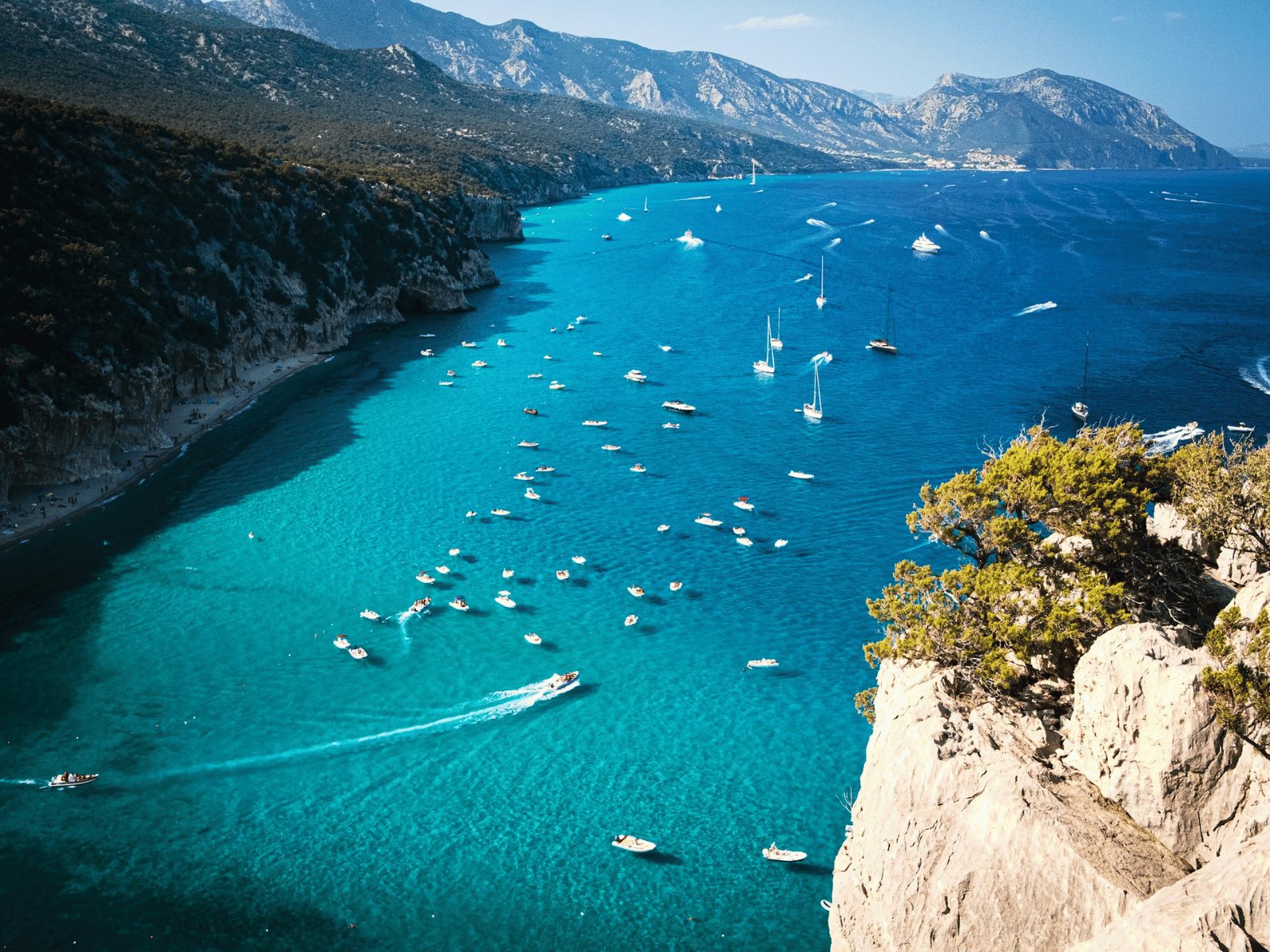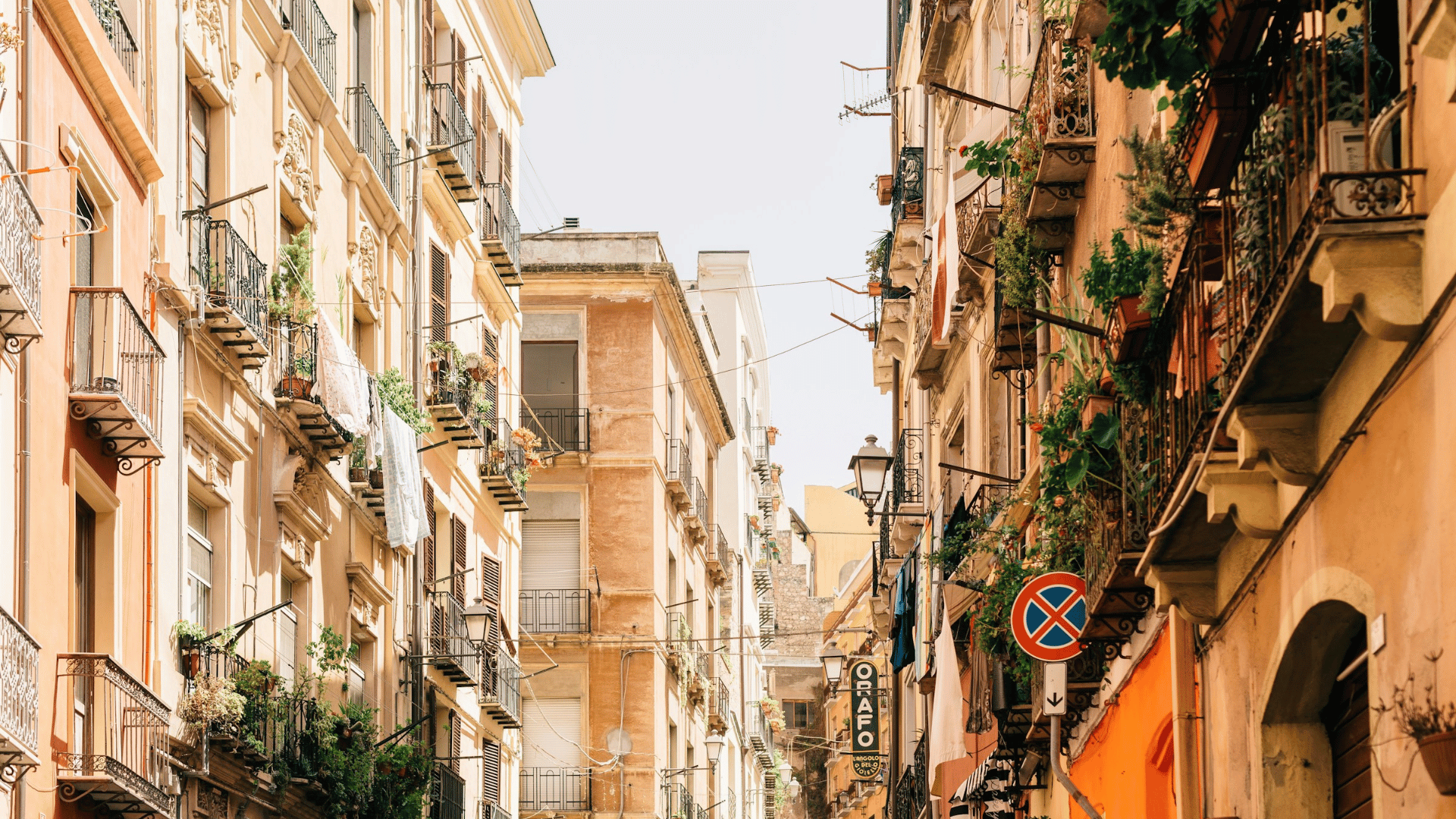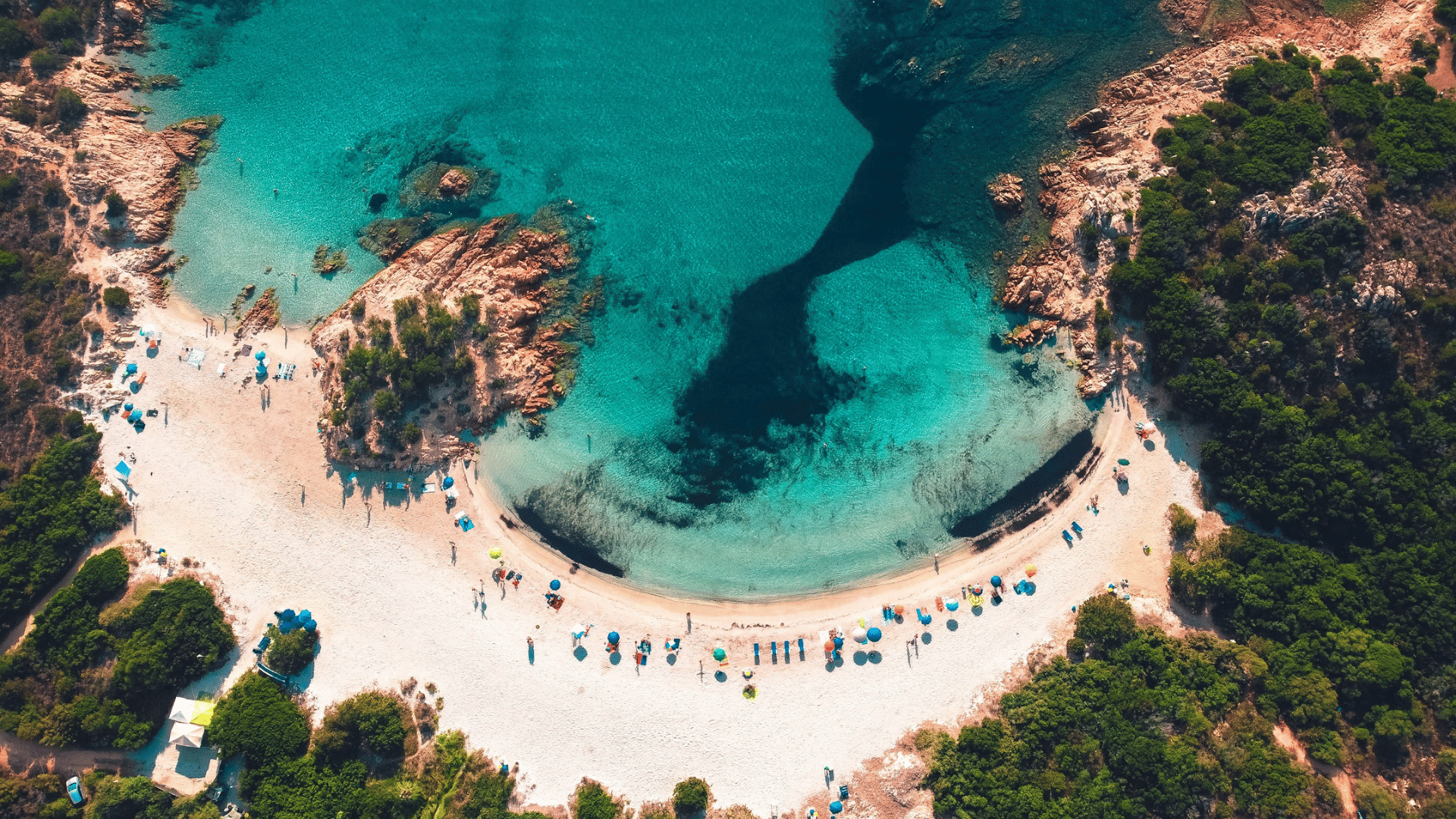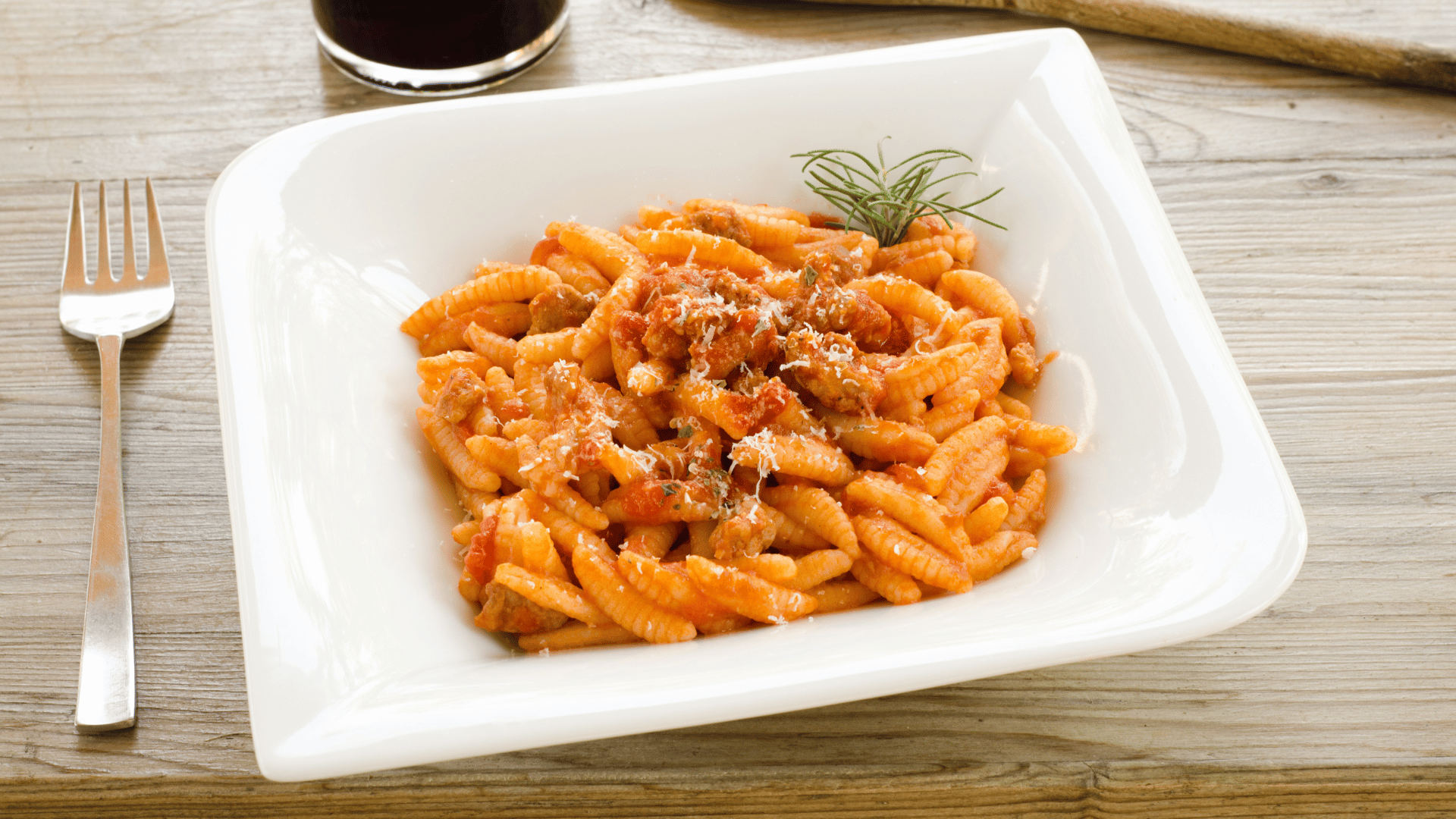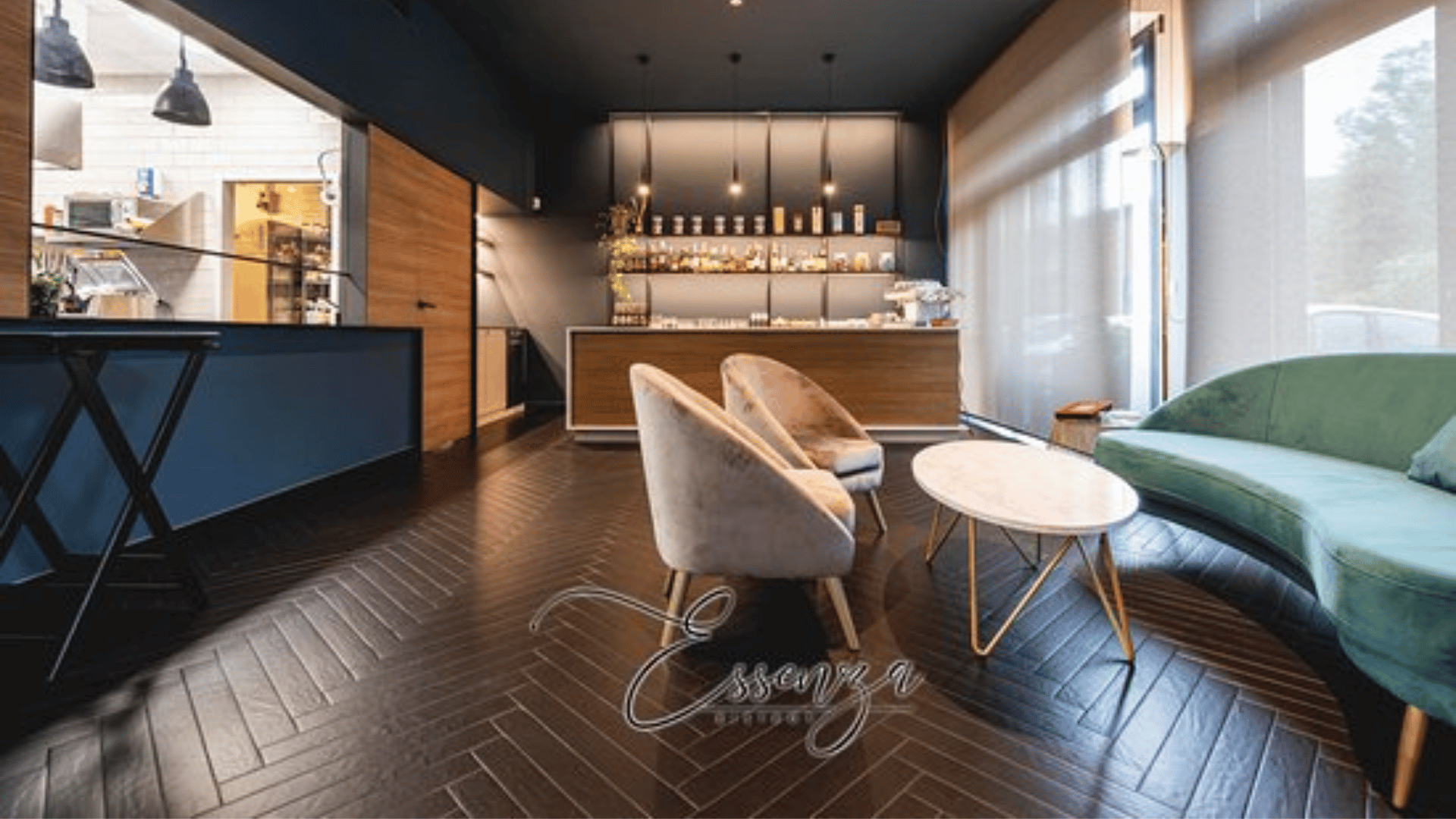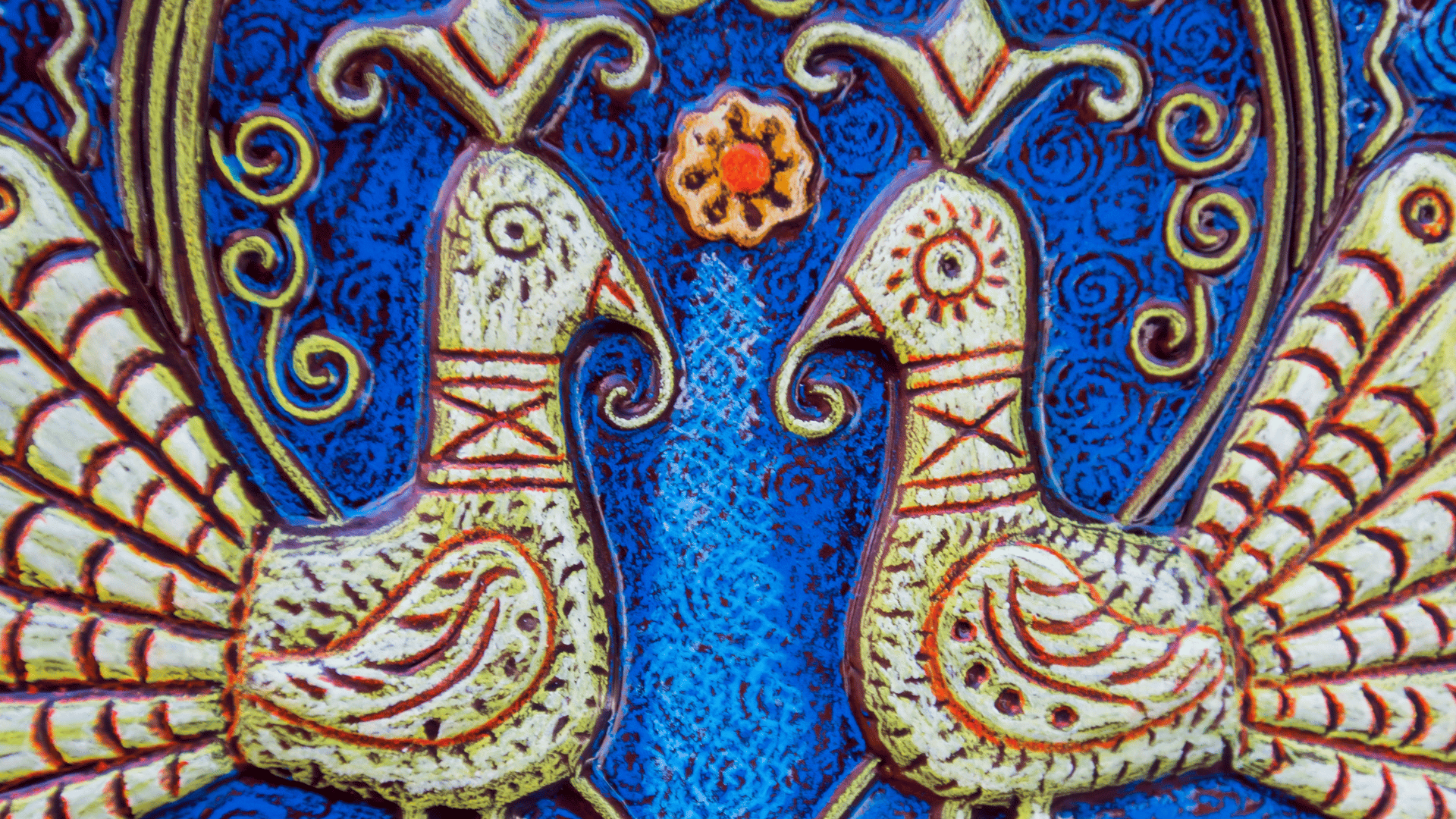Discover the island of sardinia this coming saint george's long weekend
Zaragoza, April 15, 2024
Welcome to Sardinia, a magical island located in the heart of the Mediterranean Sea. With its stunning white sandy beaches, crystal clear waters and rich cultural history,
Sardinia, the second largest island in the Mediterranean Sea after Sicily. A natural paradise with a diverse geography ranging from stunning beaches to majestic mountains.
Sardinia's coastline is dotted with beautiful white sandy beaches and crystal clear waters that attract travelers from all over the world. The famous Costa Smeralda, in the northeast of the island, is known for its spectacular coves and rugged landscapes. Inland, you will find mountains covered with lush Mediterranean vegetation, such as Mount Limbara and Supramonte, offering breathtaking panoramic views and opportunities for hiking and climbing.
The island is divided into eight provinces, each with its own cultural identity and natural beauty. In the north, the province of Olbia-Tempio is famous for its dreamy beaches and rich history, while in the south, the province of Cagliari boasts charming medieval towns and ancient Roman ruins.
Sardinia's climate is typically Mediterranean, with hot, dry summers and mild, wet winters. Spring and autumn are the best times to visit the island, when the weather is milder and the crowds are less dense.
A bit of history: the cultural treasures of Sardinia
Sardinia has been inhabited since prehistoric times, and its history is steeped in the influence of various civilizations, from the Phoenicians and Romans to the Arabs and Spanish. Archaeological remains, such as the mysterious Nuragic towers and Roman ruins, attest to the island's rich cultural heritage. In addition, Sardinia's history is marked by its struggle for independence and the preservation of its unique identity within Italy.
There is a significant historical relationship between Sardinia and Aragon. During the Middle Ages, the island of Sardinia was under the influence of several European powers, including the Crown of Aragon.
In the 14th century, the House of Aragon, a branch of the Trastámara dynasty, consolidated its dominion over Sardinia after a series of conflicts and dynastic alliances. Peter IV of Aragon, known as Peter the Ceremonious, was one of the most prominent monarchs in this relationship. With the signing of the Treaty of Cazorla in 1388, Sardinia officially became part of the Crown of Aragon, becoming a crucial territory in the crown's maritime and commercial ambitions.
The Aragonese presence in Sardinia left a lasting mark on the island, both in terms of architecture and culture. Numerous castles and fortresses were built, such as the Castello di San Michele in Cagliari, which still stand today as testimony to the Aragonese influence. In addition, the linguistic and cultural influence can also be seen in aspects such as toponymy and local traditions.
The relationship between Sardinia and Aragon continued until the 18th century, when the Kingdom of Sardinia became part of the Kingdom of Sicily under the House of Savoy after the War of the Spanish Succession. However, the imprint left by the Aragonese domination remains an important part of Sardinia's history and identity to this day.
Exploring the wonders of Sardinia!
Imagine a place where gleaming yachts and the elite gather to enjoy luxury and beauty. That place is Porto Cervo, located on Sardinia's dazzling Costa Smeralda. But did you know that the nearby town of Olbia, on the east coast, is a perfect base for exploring both the Costa Smeralda and other highlights of the island?
Olbia is like the nerve center of adventure in Sardinia. Its central location makes it the ideal starting point for thrill-filled excursions, ranging from hikes through the breathtaking Gorropu Canyon to relaxing days on dreamy beaches. What more could you ask for?
Meanwhile, on the south coast, the island's capital, Cagliari, rises majestically. This vibrant city is a must-see destination at any time of the year. Its streets are bursting with color and life, and its beaches, such as the famous Poetto, are simply spectacular.
But the jewel in the crown of southern Sardinia is Su Nuraxi, an ancient Nuragic settlement declared a UNESCO World Heritage Site. Just an hour from Cagliari, this archaeological site will transport you back in time and immerse you in the fascinating history of the island.
So now you know, Sardinia is full of treasures waiting to be discovered. From the exclusivity of Porto Cervo to the ancestral history of Su Nuraxi, this island has something for all adventurers and beauty lovers- don't miss out!
How to get from Olbia Airport to Olbia City
Olbia-Costa Smeralda Airport is the main gateway to Sardinia. From the airport, you can take a cab, bus or rental car to reach the town of Olbia, which is only about 4 kilometers away. Cabs are usually available outside the terminal, while buses offer regular services to the city center. There are also several car rental companies operating at the airport, giving you the freedom to explore the island at your own pace.
By cab
The most comfortable and inexpensive way to get from Olbia airport to the city or any other point on the island is to book a private transfer, on the platform Civitatis you can book your transfers
By bus
Lines 2 (Poltu Quadu, San Simplicio, D'Annunzio, Sangallo, Capolinea Sa Minda Noa) and 10 (Via Roma, Via Mameli, Cimitero Nuovo) of ASPO (Tel +39 800 191 847) connect the airport with the city center every 20 minutes, from 6:15 am to 11:40 pm. The journey takes 15-20 min. and costs €1.50. Stops are located 50 meters from the arrival hall.
Rent a car
In Olbia it is possible to rent a car easily, with pick-up both in the city center and at the airport. There is usually more availability and cheaper prices at the airport, where the classic car rental agencies such as Avis, Hertz or Sixt, among many other local agencies, operate.
The airport is located on the outskirts of Olbia, about four kilometers away, and it takes no more than twenty minutes by car.
A good tip when choosing a car is to take into account whether we have in mind a coastal route or the idea is to travel throughout Sardinia and go into the interior of the island, which being more mountainous, it is advisable to rent a more powerful car.
Where to stay: options for all tastes and budgets
In Olbia, you will find a wide range of accommodation options to suit all budgets and preferences. From luxurious beachfront resorts to cozy bed and breakfasts in the old town, there is something for everyone. For an authentic experience, consider staying in a farmhouse or agriturismo, where you can enjoy Sardinian hospitality and explore the surrounding countryside.
The platform Tripadvisor offers its list of the top 10 recommended accommodations by category.
Another good recommendation of boutique accommodations with lots of charm is offered by the platform Boutique Hotel
Best hotels near Olbia and Cagliari
Situated just south of Olbia is the Baglioni Resort Sardinia . The newly opened luxury hotel is well located for exploring more of the island's east coast while being close to the Costa Smeralda. The resort is located along the Tavolara Marine Reserve, an excellent spot for swimming, snorkeling and diving. Food enthusiasts can enjoy the Michelin-starred restaurant, Gusto by Sadler. Along the east coast, in the seaside town of Cala Gonone, is the Hotel Villa Gustui Maris. the Hotel Villa Gustui Maris Cala Gonone. . The four-star property is perfectly located for hiking in the Gorropu Canyon and enjoying stunning beaches such as Cala Luna. In the center of Cagliari is the Palazzo Doglio. the Palazzo Doglio . The luxury hotel features a beautiful courtyard, spa and indoor pool. With parking and shuttle service to the beach available to guests, Palazzo Doglio is an excellent choice for those staying in Cagliari. Another top-notch hotel in Cagliari, the Hotel Villa Fanny, features an elegant garden and a bar.
Immerse yourself in Sardinia's Mediterranean lifestyle
The lifestyle in Sardinia is relaxed and laid-back, reflecting the leisurely pace of life on the island. Sardinians are known for their hospitality and warmth, and will welcome you with open arms. Local cuisine is an integral part of life in Sardinia, and food and drink play an important role in celebrations and social gatherings.
The standard of living on the island, as of April 2024, is similar to that of Spain, as an example:
-Popular daily menu: 15 Euros per person
-Menu in a charming restaurant: 35 Euros per person.
-Cab 8 Km: 18 Euros
-A cocktail in a pub or disco: 8 Euros
-A coffee in a bar: 1,50 to 2 Euros
-A soft drink: 3 Euros
- A half liter beer: 4 Euros
What to do in Sardinia? Discover its natural and cultural treasures
Sardinia offers a wide variety of activities to suit all tastes. From relaxing on the beautiful beaches of the Costa Smeralda to exploring ancient Nuragic ruins and medieval towns, there is something for everyone. Boat trips to neighboring islands, such as La Maddalena, are a great way to explore the stunning natural beauty of the region.
The excursion platform Civitatis offers a good and varied selection of activities such as:
-Boat trips
-Tours along the Costa Smeralda
-Gastronomic tours and visits to wineries
-Whale and dolphin watching
-Electric bicycle tours
- Trekking, hiking, snorkeling, kayaking in the mountains and canyon rappelling.
- 4X4 tours
-Thematic tours around the presence of the Crown of Aragon in Sardinia
Some of the best beaches in Sardinia, focusing on the Costa Smeralda. About 30 Km from Olbia
Spiaggia Capriccioli (Costa Smeralda, northeastern Sardinia): one of the best beaches on the island, Spiaggia Capriccioli is a quiet sandy inlet with a granite outcrop that divides the beach into two sections. The waters are clear and calm, making it an ideal place for families and snorkeling. Arrive early as the beach and parking lot fill up quickly.
Spiaggia del Principe (Costa Smeralda, northeastern Sardinia): Another of Sardinia's best beaches, Spiaggia del Principe is named after Prince Karim Aga Khan. The underdeveloped beach features white sand and requires a short walk through the brush from the parking lot.
Spiaggia di Liscia Ruja (Costa Smeralda, northeastern Sardinia): home to several beach clubs, Spiaggia di Liscia Ruja is one of the longest beaches on the Costa Smeralda. If you're looking for a beach with plenty of amenities, rent a sun lounger and spend a day relaxing at one of the beach clubs. The White Beach Club is one of the best here.
Spiaggia del Pevero (Costa Smeralda, northeastern Sardinia): less than two miles from Porto Cervo is Spiaggia del Pevero. This beach is actually two beaches: Spiaggia del Piccolo Pevero (small beach) and Piaggia del Piccolo Grande (large beach). The clear, shallow waters are ideal for snorkeling and there is even a hotel and restaurant within walking distance of the beaches.
Cala Brandinchi (San Teodoro, East Sardinia): One of the most famous and beautiful beaches in Sardinia, Cala Brandinchi is nicknamed "Little Tahiti" for its clear and shallow waters. The soft sandy beach faces east and stretches about half a mile long. Located just south of Olbia and about an hour's drive from Porto Cervo.
Cala Luna (Gulf of Orosei, eastern Sardinia): a picturesque and secluded beach surrounded by limestone cliffs. The only way to access the beach is to walk 4 kilometers or take a boat from the marina of Cala Gonone, which only operates during the summer. A few kilometers from Cala Luna is the Grotta del Bue Marino, a series of famous caves with Neolithic carvings and stalactites. If you are in the area, be sure to take a boat tour of the grotto from Cala Gonone.
How to spend a perfect day
Rent a lounger and enjoy a delicious lunch by the water. The White Beach Club in Liscia Ruja is one of the best on the Costa Smeralda. Another fabulous beach club with a party atmosphere is Nikki Beach Sardinia. Nikki Beach Club is also present in many of the world's top luxury destinations, such as Saint Tropez and Saint Barths. Phi Beach Club, with a vibrant nightclub, is another popular beach club in the area; however, the sandy beach here is quite small.
Paradise for hikers
Sardinia's diverse landscape makes it an ideal place for first class trekking.
Explore the island's mountainous interior on foot or hike along the coast to enjoy unique viewpoints of the turquoise water. Some of the best hiking trails on the island are in the Gorropu Canyon, one of the deepest canyons in Europe.
Located in the center of Sardinia, about two hours south of Porto Cervo, the spectacular canyon offers trails for all types of hikers.
One of the most popular hikes here is Genna Silana . The 5.2 mile round-trip trail offers panoramic views as you hike into the canyon. Be sure to bring plenty of water and some cash to pay the €5 entrance fee to enter Gola su Gorropu.
Near the Gorropu Canyon is the Sentiero Cala Luna (6.3 miles round trip). The beautiful coastal path takes you to Cala Luna beach with a great mix of forest scenery.
You can also walk 5 kilometers and take the boat back. One of the most beautiful and rewarding hikes in Europe, Selvaggio Blu, is located in Sardinia. Selvaggio Blu is a trail of approximately 40 kilometers that runs through forests and cliffs along the east coast of the island. There are several tour companies that organize multi-day excursions for this intense hike.
Sardinian gastronomy: taste the local dishes
Sardinian gastronomy is rich and varied, with influences from Italian and Mediterranean cuisine.
Don't miss the delicious local cheeses, such as the Sardinian pecorino, and the wines of the region, such as the red Cannonau. Sardinia is a famous producer of pecorino cheese, so its presence on almost every menu is no surprise.
Malloreddus alla campidanese, a local pasta served in tomato sauce with sausage, is Sardinia's quintessential pasta dish. One of the island's best-known foods is su porcheddu, roast suckling pig. From the sea you will find mussels, squid and lots of fresh fish. There is no shortage of delicious food on the island and restaurants make sure to highlight local flavors.
Halfway between a small pasta and a giant couscous, fregola is served everywhere, often with clams and saffron sauce, a testament to the island's Middle Eastern influences.
Where to eat: recommended popular and romantic restaurants
In Olbia and throughout Sardinia, you will find a wide selection of restaurants serving local and international cuisine. For a truly memorable experience, book a table at a restaurant overlooking the sea and enjoy a romantic dinner at sunset. Some of the most popular restaurants include La Tavernetta, Il Pescatore and La Lampara.
Corso Umberto is a charming cobblestone street in Olbia that runs through the central Piazza Regina Margherita in the old town. Some of the most interesting things to see in Olbia can be found here. Strolling along this street you will find a large number of restaurants with terraces serving the most exquisite Sardinian delicacies.
Culurgiones, a dumpling filled with cheese, mint and potatoes, are popular in the Ogliastra region, while neighboring Nouro boasts the "rarest pasta in the world." Angel hair filindeu pasta, laboriously slow to prepare, has a recipe shared only by a handful of elderly women.
The best seafood is served in the restaurants of Alghero, the only truly traditional fishing village, in the northwest; try the lobster, shellfish or the special "bottarga": salted mullet roe.
Surprisingly, most of the traditional dishes have their roots in the interior, where most people originally settled.
A dangerous Sardinian gastronomic curiosity
Pecorino is not the only cheese for which Sardinia is famous. Casu Marzu is one of the island's best-known foods due to its illegal status; in 2009, the Guinness Book of World Records proclaimed it the most dangerous cheese in the world. Why? Casu Marzu is made by allowing worms to hatch in the crevices of sheep cheese and digest its proteins into a creamy product. It's not something for the faint-hearted. In fact, an EU law has outlawed the purchase and sale of Casu Marzu in Sardinia.
A restaurant you will never forget
L'Essenza Bistrot,
8a , Via delle Terme , Olbia , Sardinia , 07026 , Italy .
Phone: +39 078 925594
At Bistrot Essenza, the stone walls are typical of Olbia's architecture.
L'Essenza Bistrot is a gourmet restaurant in Olbia, located in via delle Terme, right in the heart of the city. As a Michelin-starred restaurant, L'Essenza Bistrot is famous for serving Italian dishes, renowned for their excellent flavors and rich textures. In addition, this charming restaurant boasts impeccable service. Local produce and seafood also feature prominently on the menu and popular dishes include marinated salmon served with fresh pickled vegetables and citrus mayonnaise.
The best restaurants on the Costa Smeralda
While my favorite meals in Sardinia are picnics on the beach, the island has wonderful restaurants. Somu is a Michelin-starred restaurant run by owner and chef Salvatore Camedda. You will enjoy a pre-set menu consisting of top quality local flavors and a breathtaking view of the Baja Sardinia beach. Another Michelin-starred restaurant, ConFusion, is located right in Porto Cervo. The elegant restaurant serves unique seafood-centric dishes. Aruanà Churrascaria, in Poltu Quatu, serves delicious Brazilian-style grilled meats. Poltu Quatu is a beautiful village built on a picturesque inlet. A tip, arrive early and have a cocktail in the water before dinner. Cannigione is one of the larger towns near the Costa Smeralda with several casual and delicious restaurants. Cutter Bistro is right by the water and has excellent drinks and food. Brezza di Mare specializes in seafood. And if you're in the mood for something sweet, Bosisio has the best gelato in Cannigione.
What to buy and where: souvenirs and local handicrafts
The streets of Olbia are lined with charming stores where you can buy souvenirs and local handicrafts. From hand-painted ceramics to coral and leather jewelry, there is a wide variety of unique products to choose from. Don't miss the San Simplicio market, where you'll find a great selection of local products, including cheeses, cured meats and wines.
Myrtle is a delicious liqueur, exclusive of Sardinia and nearby Corsica. It is made from the berries of the myrtle plant. If you've only brought hand luggage, don't worry! There are a variety of scented soaps and moisturizers made from this berry that you can take with you.
Sardinian pottery is simple and often white. It is decorated with ancient but charming designs that are believed to represent good harvests and fertility. You will see motifs such as fish, chickens and the Sardinian lapwing (pavoncella) adorning these unique pieces.
Sardinian pecorino is one of Sardinia's main culinary exports and is worth tasting in all its varieties.
Entertainment venues: lively evenings and local entertainment
At night, Olbia, in season, comes alive with a lively nightlife scene. From bars and nightclubs to cafes and theaters, there is something for everyone. Enjoy a cocktail at a seaside bar or dance at a trendy disco.
One of the best bars on the Costa Smeralda is the exclusive Le Terraze Rituale . Carved into the rocks, the rooftop establishment features serving terraces with views stretching all the way to the islands of La Maddalena.Come here for unforgettable sunset drinks. And after the sun goes down, head to the connected Ritual Club, which has provided nightly entertainment to the island for decades. Another unforgettable spot is Phi Beach . This trendy open-air venue is right on the water in front of Forte Cappellini, a Napoleonic fortress. Come for a sunset drink and stay listening to the exquisite music of the nightly DJ.
Local customs and curiosities: discover the Sardinian Culture
Sardinians are known for their proud sense of identity and deep-rooted cultural traditions. During your stay, don't be surprised if you are invited to participate in a local festival or to try a delicious home-cooked meal at a friend's house. In addition, it is important to remember to respect local customs and treat the locals with courtesy and consideration.
With this guide, you are ready to explore all the treasures that Sardinia has to offer. Have an unforgettable trip!
7 curiosities about Sardinia and its inhabitants that will surely catch your attention
The Sardinian language: Although Italian is the official language of Sardinia, the island has its own language, Sardinian, which has survived through the centuries and is spoken by a significant part of the population. Sardinian has several variants and dialects that reflect the cultural diversity of the island.
The Nuragic Towers: Sardinia is home to some 7,000 Nuragic towers, stone structures built during the Bronze Age that are unique in the world. These towers are an archaeological mystery and their exact purpose is still debated, although it is believed that they may have been fortresses, temples or residences.
Sardinian banditism: For centuries, Sardinia was known for its history of banditism and resistance against the central government. Bandits, known as "banditi", hid in the mountains and fought against oppression. This history has inspired numerous legends and literary works, such as the famous novel "Sandokan" by Emilio Salgari.
The cave paintings of Tiscalli: In the heart of Sardinia lies the abandoned village of Tiscalli, famous for its caves and prehistoric cave paintings. These paintings, dating back thousands of years, depict hunting scenes, rituals and the daily life of the island's ancient inhabitants.
The dance of the Dolços: In the village of Bitti, in the Barbagia region, an ancient tradition known as "Su ballu de sos dolços" or the dance of the sweets takes place. In this event, single men dance with a tray of sweets balanced on their heads, while women try to steal the sweets without making the tray fall.
The culture of longevity in Villagrande Strisaili: The village of Villagrande Strisaili, located in the mountains of Sardinia, is known to be one of the places with the highest longevity in the world. The inhabitants of this village have a healthy diet, rich in local products such as honey and goat cheese, and enjoy a quiet lifestyle connected to nature that allows them to live long and healthy lives.
La siesta: As in Spain and some parts of the Mediterranean, the siesta is a deep-rooted custom in Sardinian culture. During the hottest hours of the day, it is common for stores and businesses to close temporarily so that people can rest and cool off at home before returning to their activities in the afternoon.
Some literary works and movies set in Sardinia:
Books:
"The Wind in the Moon" (1919) - Grazia Deledda: This novel, written by Nobel Prize for Literature winner Grazia Deledda, is set in rural Sardinia and offers an intimate look at island life and traditions.
"The Bees of the City and the Countryside" (1953) - Salvatore Cambosu: This book is a collection of short stories and tales set in early 20th century Sardinia, exploring themes such as rural life, religion and local culture.
"Padre padrone" (1975) - Gavino Ledda: This autobiography recounts the author's childhood and adolescence in post-war rural Sardinia, where he struggles to escape the yoke of his authoritarian father and obtain an education.
"Sardinia Blues" (1994) - Flavio Soriga: This contemporary novel follows the story of a young Sardinian who returns to his native island after spending years abroad, exploring themes of identity, belonging and cultural change.
Movies:
"Porcile" (1969) - Pier Paolo Pasolini: This film by renowned Italian director Pier Paolo Pasolini has scenes set in Sardinia and follows the intertwined stories of a young man who joins a group of cannibals and a German industrialist seeking refuge on the island during World War II.
"The Great Beauty" (2013) - Paolo Sorrentino: Although not all of the film is set in Sardinia, there is a memorable sequence filmed on the Costa Smeralda that showcases the stunning scenery and opulence of the area.
"Wind of Earth" (2004) - Vincenzo Marra: This film tells the story of a young Sardinian man who returns to his hometown after spending years in prison, facing social changes and conflicts in contemporary Sardinia.
Note from the author of this guide
The Sardinia travel guide prepared by Javier Lozano provides information based on the best evidence available at the time of writing. However, due to the changing nature of the tourism industry and possible modifications in the ownership, quality or availability of the recommended places, we cannot guarantee the accuracy or currency of such information at the time of your consultation. Therefore, we recommend readers to verify the updated information and confirm the availability of the places mentioned before planning their visit. We disclaim any liability for any inconvenience, loss or damage that may arise as a result of using the information provided in this guide.
If you liked it, share this article
YOU WILL ENJOY READING

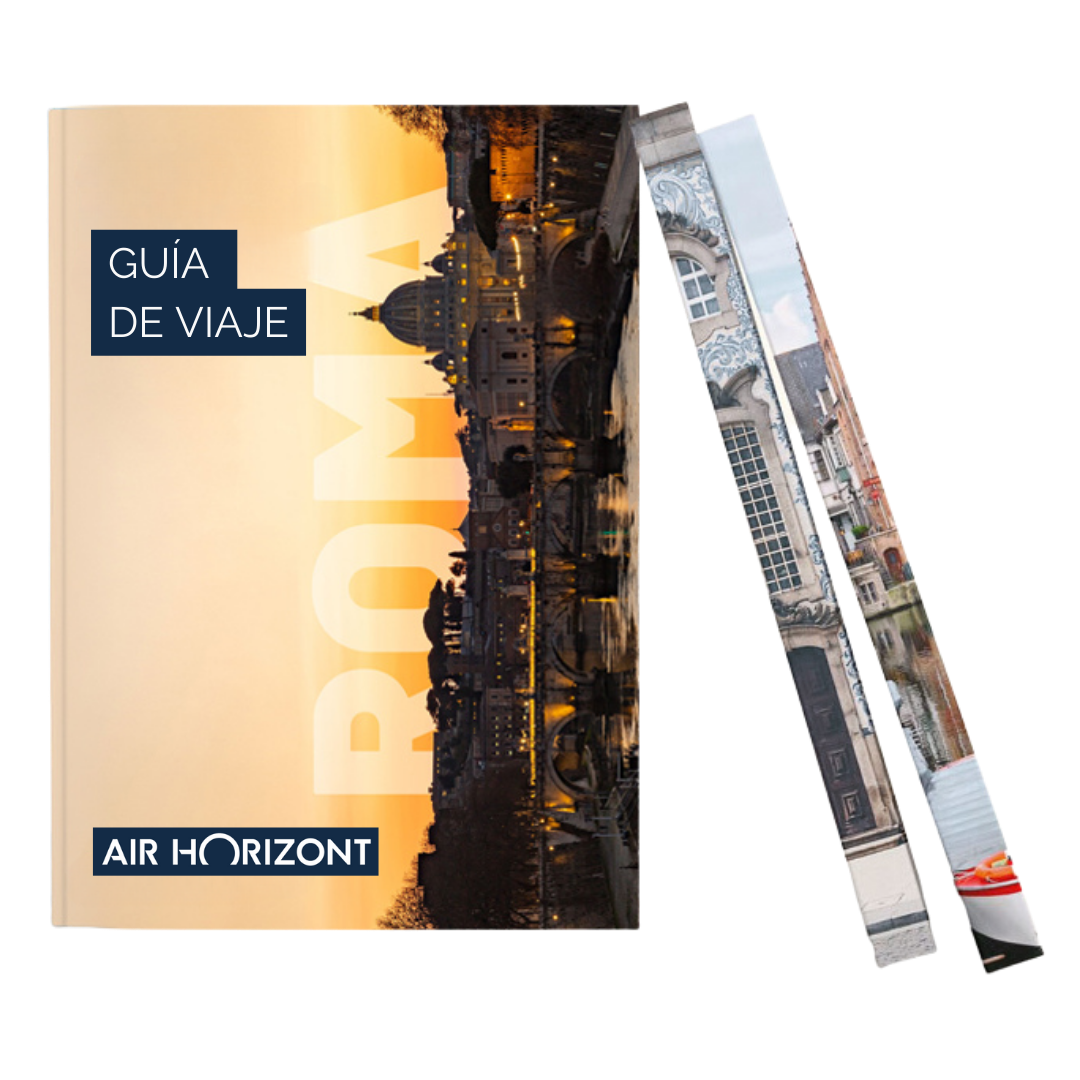
JOIN THE CLUB
"LIVE FLYING"
WHY WILL YOU LIKE IT?
In the club you will find...
- Promotions with special discounts only for subscribers.
- Travelers' meetings.
- Online travel chats, learn the secrets of the cities where we fly.
- Sweepstakes and contests.
- Top guides with the best secrets of the cities where we are going to escape.
- Visiting the cockpit of a Boeing 737, a photo you will love to have.
- Solidarity actions.
- Workshops from "losing the fear of flying" to "how to organize your getaway saving time and money".
- Ask the expert: everything you would like to know about the world of aviation and never dared to ask.
- Passenger stories. Share with your fellow club members the photo, anecdote or story that caught your attention during your trip.

